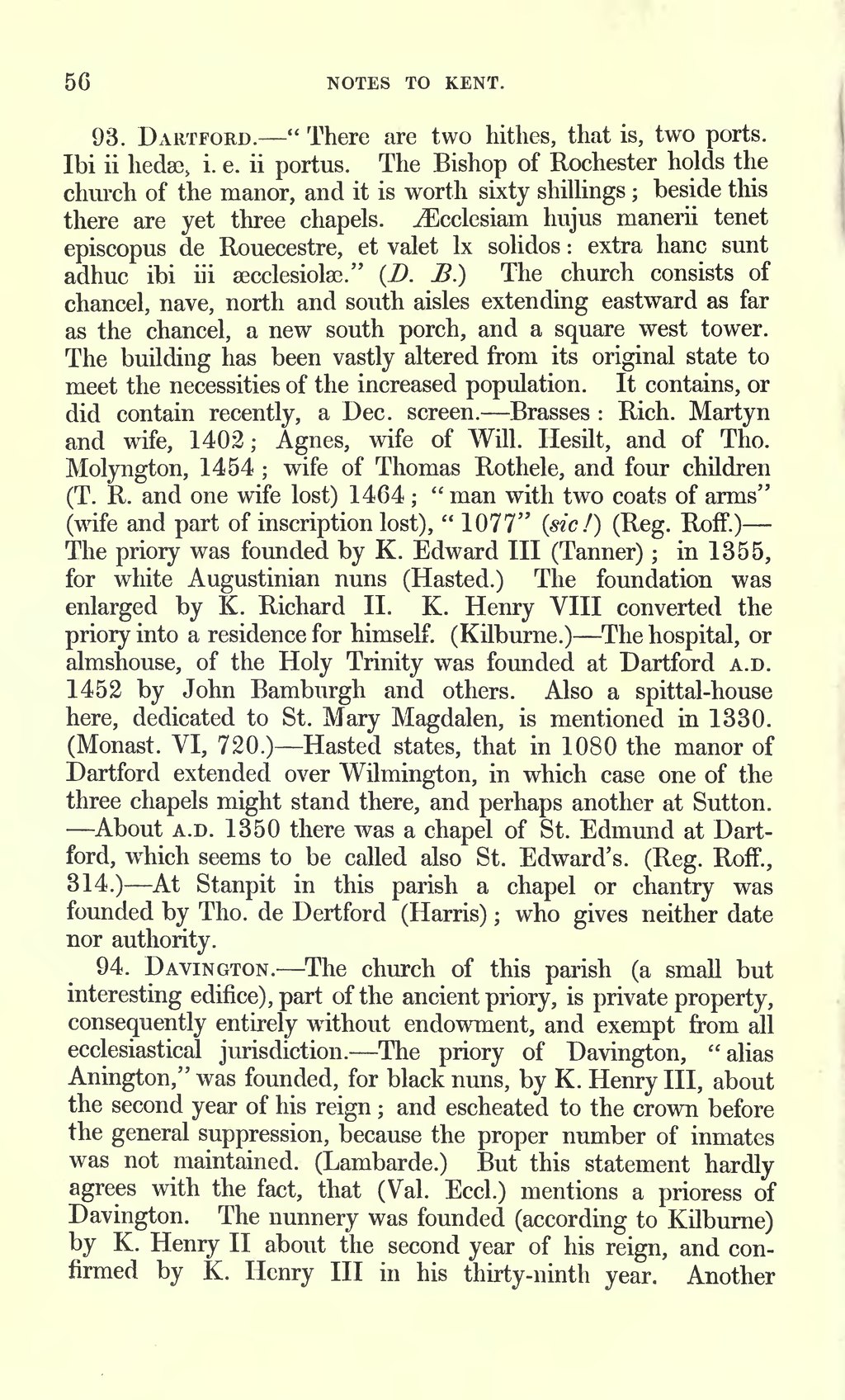93. Dartford.—"There are two hithes, that is, two ports. Ibi ii hedæ, i.e. ii portus. The Bishop of Rochester holds the church of the manor, and it is worth sixty shillings; beside this there are yet three chapels. Æcclesiam hujus manerii tenet episcopus de Rouccestre, et valet lx solidos: extra hanc sunt adhuc ibi iii æcclesiolæ." (D. B.) The church consists of chancel, nave, north and south aisles extending eastward as far as the chancel, a new south porch, and a square west tower. The building has been vastly altered from its original state to meet the necessities of the increased population. It contains, or did contain recently, a Dec. screen. Brasses: Rich. Martyn and wife, 1402; Agnes, wife of Will. Hesilt, and of Tho. Molyngton, 1454; wife of Thomas Rothele, and four children (T. R. and one wife lost) 1464; "man with two coats of arms" (wife and part of inscription lost), "1077" (sic!) (Reg. Roff.)—The priory was founded by K. Edward III (Tanner); in 1355, for white Augustinian nuns (Hasted.) The foundation was enlarged by K. Richard II. K. Henry VIII converted the priory into a residence for himself. (Kilburne.)—The hospital, or almshouse, of the Holy Trinity was founded at Dartford A.D. 1452 by John Bamburgh and others. Also a spittal-house here, dedicated to St. Mary Magdalen, is mentioned in 1330. (Monast. VI, 720.)—Hasted states, that in 1080 the manor of Dartford extended over Wilmington, in which case one of the three chapels might stand there, and perhaps another at Sutton.—About A.D. 1350 there was a chapel of St. Edmund at Dartford, which seems to be called also St. Edward's. (Reg. Roff., 314.) At Stanpit in this parish a chapel or chantry was founded by Tho. de Dertford (Harris); who gives neither date nor authority.
94. Davington. The church of this parish (a small but interesting edifice), part of the ancient priory, is private property, consequently entirely without endowment, and exempt from all ecclesiastical jurisdiction. The priory of Davington, "alias Anington," was founded, for black nuns, by K. Henry III, about the second year of his reign; and escheated to the crown before the general suppression, because the proper number of inmates was not maintained. (Lambarde.) But this statement hardly agrees with the fact, that (Val. Eccl.) mentions a prioress of Davington. The nunnery was founded (according to Kilburne) by K. Henry II about the second year of his reign, and confirmed by K. Henry III in his thirty-ninth year. Another
